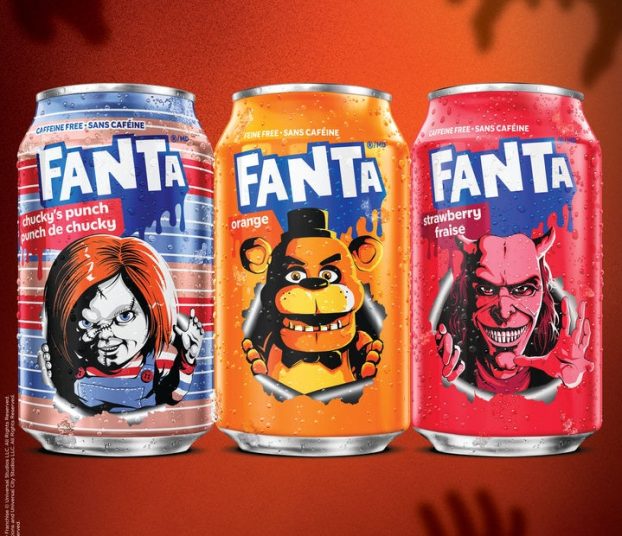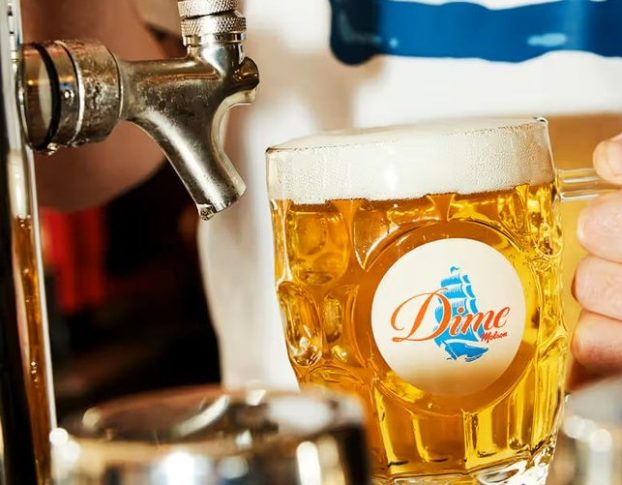Fiona Stevenson is a natural on stage, at least according to the attendees of this year’s Procter & Gamble internal awards, an event she hosted. ‘Hosting was a great experience. Normally we hire external emcees and the team asked me this year if I wanted to do it. It was an instant ‘yes’ because I love doing that kind of stuff,’ says the category brand manager on cosmetics, who got to make use of her background in improv comedy.
But her night got even more exciting when she and her CoverGirl marketing teammates Rob Payne (who has since moved on to Pantene) and Laura Gray won the Best Brand Building award, beating out Pampers and Actonel. ‘That was a surprise,’ says Stevenson. ‘My jaw just dropped and I was very excited.’
While she wasn’t expecting the award, the CoverGirl team had proved they deserved it – making the most of consumer insights to turn the business around.
In 2003, Shoppers Drug Mart began introducing beauty boutiques to its stores – separate sections that feature prestige brands like Lancôme and Clinique previously only available in department and specialty stores. Today there are about 250 of these boutiques in Shoppers across the country. The prestige brands now represent about a 26 dollar share of cosmetics sold in Shoppers stores – the size of CoverGirl and L’Oréal combined. And CoverGirl found its market share starting to decline.
‘Brand loyalty has never been high in cosmetics,’ Stevenson says. ‘If you think 20 or even 10 years ago, when we had a new innovation, everyone would hear about it. It was a lot less fragmented of a market, whereas now there’s hundreds of brands shouting. How do you really stand out in that environment?’
That was the challenge – stand out from the prestige brands, as well as from mass competition like Maybelline. In 2006/07, the CoverGirl team (which Stevenson joined in October ’07) embarked on a brand-building mission to turn the share around. That year, dollar sales increased 10% and share grew by a full share point, followed by 0.3 points in 07/08 and 0.2 in 08/09 – not too shabby considering all of CoverGirl’s competition in the mass set has lost share this year. This past year, CoverGirl’s dollar share was 17.2.
So how did they do it? Consumer research revealed that shade selection was a factor – it’s easy at department stores where testers are available, but not so easy when consumers are on their own in the drugstore aisles. So a special hand-held shade selector was created and given to the drugstore beauty advisors who were taught how to help consumers pick their shades of foundation.
The tool was also used by a team called the Shade Brigade who hit the streets in Toronto, Vancouver, Montreal and Calgary for the first time last fall and then again this summer, highlighting some of the newer products. It was brought to life with Saatchi & Saatchi Toronto, which handles CoverGirl’s Canadian-born programs (most creative, such as print and TV, comes out of the U.S. and Grey New York).
‘The idea behind the Shade Brigade is we have a street team that goes around to high-traffic areas where our target is present and actually matches them on the spot,’ explains Stevenson. The consumer is then given a coupon with their shade circled on it so they can go to a drugstore and pick out their match. It resulted in great feedback from program participants, as well as an increase in the number of deep interactions and positive share results, with CoverGirl foundation up 0.6 share points in the past year.
Another insight gleaned from research was that mascara represented an opportunity to lure prestige users over to the mass side. When one of CoverGirl’s latest innovations, Lashblast mascara, was launched in January 2008, Stevenson and her team supported a heavy media push (that used print and TV creative from the U.S.) with a big focus on eye-catching Canadian-created in-store displays.
‘Fiona extended the life of our Lashblast product news with secondary placement outside of the cosmetics wall, on displays, on clip strips and at checkout, and with wave after wave of new innovative ways to more fully leverage the idea,’ explains Tim Penner, president of P&G.
In-store display also included huge images of Drew Barrymore (the product’s spokesperson), and featured the mascara’s brush, which was a unique selling point.
‘Lashblast shot to number one in its first three months in market and has held that position,’ says Penner. ‘The results were almost double our expectation.’
Part of the Lashblast strategy – and one of Stevenson’s strengths, according to Penner – was leveraging the core campaign across multiple touchpoints. This, of course, includes online.
With so many consumers in the online space, this was an area CoverGirl was lacking in Canada. Three years ago, there was no Canadian-specific CoverGirl website, so to remedy that, Covergirl.ca was created. The site doesn’t just borrow U.S. material, it featured local contests, info about sampling events and other news. The interactive site also allows visitors to determine the right colours for them. Hits on the site have increased 23% in the past year, with unique visitors up 47%.
As a complement to the site, a newsletter is also sent out to a large database of consumers, also featuring Canadian content, like the recent winner of Canada’s Next Top Model who won a P&G contract. (CoverGirl was the focus of a segment on the show, and Saatchi’s SVP/CD Helen Pak was a guest judge.)
Another important way of reaching consumers, according to Stevenson, is to reach out to key influencers – specifically beauty editors and bloggers. ‘They’re getting so much stuff crossing their desks, so how do we really stand out and be different and really bring alive the benefit of the particular initiative to them?’ she says. ‘We do events for our biggest launches, we’ll do very high-quality mailers that really break through.’
Instead of just sending products and information, the CoverGirl team sent kits with a creative and personalized edge. One kit, created to promote TruBlend Microminerals last fall, focused on spokesperson Barrymore and featured ‘Drew’s favourite things’ that included not only cosmetics, but also the actress’ favourite children’s book and a list of other items she likes.
Prior to last winter’s launch of Eyelights mascara, a product that is made to complement specific eye colours, kits were sent to editors and bloggers based on their own eye colour, which had been researched in advance. Stevenson says it’s standing out, ‘not just for the sake of it, but bringing alive the unique benefit of that particular initiative.’ And results are being delivered: ‘We’ve really been winning there, a huge proportion of P&G health and beauty PR impressions are on CoverGirl…We’ve got a huge share of voice.’
While the major creative comes from the U.S., Stevenson says the part of her job she loves is taking that material, applying consumer insights, and creating unique Canadian programs based on them.
Perhaps part of her success in doing so stems from her background in psychology. ‘Immediately when I first start on a brand [I ask] how do I get inside the consumer’s head, learn as much about her as possible, really immerse myself in her and her world and then design based on those insights?’ she says.
‘So I really appreciate those local insights.
I’m always looking for [what] else we can do to make something feel Canadian. Not just feel Canadian for the sake of it but to truly be Canadian.’
Bio:
Born: Ottawa, ON., Nov. 2, 1977
Raised: mainly in Toronto after a
brief stint in Edmonton
Hobbies: travel, improv theatre, sketch comedy, creative writing, spending as much time as possible being active outdoors
Status: married as of last summer
Education: degree in psychology from Queen’s University
Career: was recruited by P&G in her fourth year at Queen’s. She started at the company in 2000 as assistant brand manager on family care, which included the transition of the Royale brand to Charmin. Stevenson was promoted after a year and a half to brand manager on feminine care, working on Always and Tampax. Then in 2003 she took an international assignment in Geneva, Switzerland where she spent two years on pet care. She’s been in her current position for about two years.
Three questions:
1. If you could have a superpower, what would it be?
I absolutely love to travel, so if I could fly very quickly, or snap my fingers and be somewhere else, I would go to a different place every weekend. As it is, I travel as much as I can.
2. What’s the last thing you do before you go to sleep at night?
Facebook – that’s so embarrassing. That’s probably when I log on and write a bunch of obnoxious things on people’s walls and see what people are up to. I wish it were something cooler.
3. What was the most exciting thing you’ve ever done?
Last year I hiked to Machu Picchu, so I did the five day trek and it was exciting because there were 15 people from all different countries.





















